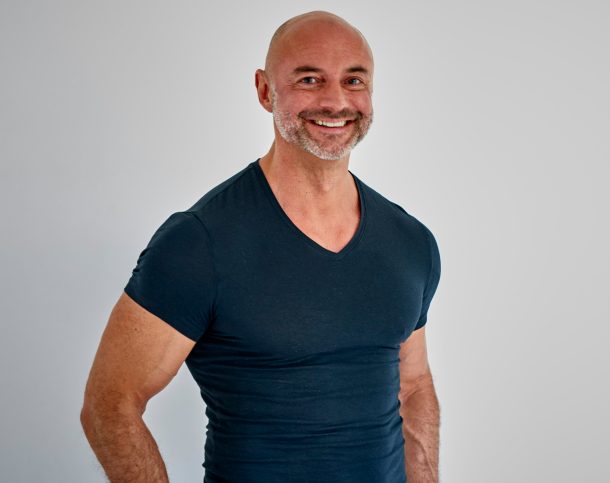Tell me your vision for your business.
Let me picture its purpose, meaning, motivation and impact.
All great businesses start with a clear vision. What’s yours?
Having clarity in your vision is being able to see where you want your business to be. What you want it to look and feel like. Together with having a plan to achieve it – in time.
Unfortunately, most coaches muddle through.
Struggling to pinpoint what they want. Drifting on. Feeling aimless and disappointed.
Today I want to explore 4 steps to craft a clearer vision. So, you don’t feel lost, can design your ultimate business and plan how to get there.
Let’s dive in.
The Importance of having a vision
A compelling vision isn’t describing what you do or how much money your business makes. It’s about describing a future that feels right for you.
The more your vision captures the essence of what you want, the more energy you’re likely to feel for it.
To be effective, a vision has four prime characteristics.
It is:
1. Inspiring
2. Strategically sound
3. Documented or illustrated
4. Actively communicated
Once these are in place, you’ll find energetic direction, motivation and a sense of purpose.
#1: Start with a wide lens, then sharpen your focus
There are two distinct approaches to creating a vision.
1. Start narrow and broaden your scope.
2. Start broad and keep focusing in.
Neither is better or worse. The outcome depends on whether you’re able to focus on your vision and take steps to achieve it.
In my own practice, I’ve found starting broad and zooming in to be more effective over time.
For example, the headline for my business vision was “Transforming lives through coaching”
On 16th October 2018, I visualised being an established coach. Having a reputation for outstanding coaching and delivering exceptional client service.
Then over time, I kept working and refining it. Zeroing in on the specifics to go deeper which illustrated new layers of clarity.
#2: Make it fluid
The most common mistake I see coaches make is treating their business vision as a static goal.
This perspective can lead to a rigid mindset, limiting your ability to adapt and evolve.
Instead, envision your vision as a fluid, dynamic process. Continuously evolving as you develop and grow.
To cultivate this mindset:
- Create reflective spaces
- Collect ideas actively
- Detach from the past
This will facilitate:
- Time for reflection and inspiration.
- Being open to new possibilities
- Focus on future opportunities rather than past limitations
Then set a time to update your vision. This could be a weekly review, a monthly deep-dive, or a quarterly retreat.
Align any milestones to ensure your vision remains relevant and inspiring.
Treating your vision as a work in progress allows it to unfold and adapt.
Staying fluid makes room for unforeseen insights.
Let your vision open up and reveal itself to you.
#3: Be patient
If you see your vision as a tick box exercise, it will have little to no significant impact.
Additionally, it’s highly unlikely you’ll nail a meaningful vision in one sitting.
Be patient and avoid rushing the process.
Set aside quality time and let your mind soar. Make space to disconnect from the distraction and noise of daily life. Allow your true desires to bubble to the surface.
In my experience a weekend retreat in a serene environment is money well spent.
The takeaway is that clarity often comes when you step back and give yourself the room to think and feel. Preferably in nature.
#4: See it, feel it, be it.
The next step is to harness the power of visualisation.
Visualisation isn’t daydreaming. It’s seeing your business as a desired future. And immersing yourself in the process required to achieve that.
For instance, if you aspire to give a TED talk, visualise yourself on stage. Picture not only the sights but also the sounds. Take in the scents, textures, and emotions that go with your vision.
Imagine the bright lights. The attentive faces in the audience, the palpable excitement in the air.
Hear the sound of your voice. Feel the adrenaline rush and the wave of accomplishment.
The more sensory-rich your vision, the stronger your motivation to achieve it.
If you can’t see your business vision, chances are it won’t happen for you.
Remember visualisation is not just about seeing an outcome. It’s about seeing yourself in the process to achieve that outcome.
Creating your business vision isn’t fantasizing what you want to achieve.
It’s about having direction and purpose. Putting together a plan of action to realise your desired future. And aligning your time, resources and decision making to achieve your vision.
Conclusion
Creating a clear vision for your business is a transformative journey.
A journey that involves:
- Recognising the importance of having a dynamic vision
- Choosing the right perspective
- Giving yourself space and time for reflection
- Embracing the power of visualisation
- Assessing and adapting your vision as you grow.
Remember, your business vision is a compass. It’s there to guide your decisions and steer you towards your desired future.
By following these steps you can navigate your journey with confidence and clarity.
I encourage you to take action today. Start by reflecting on the vision you currently have for your business.
Is it clear, inspiring, strategically sound, documented and actively communicated?
If not, apply these steps to refine it.
Share your vision with others, seek feedback, and let it evolve as you progress.


